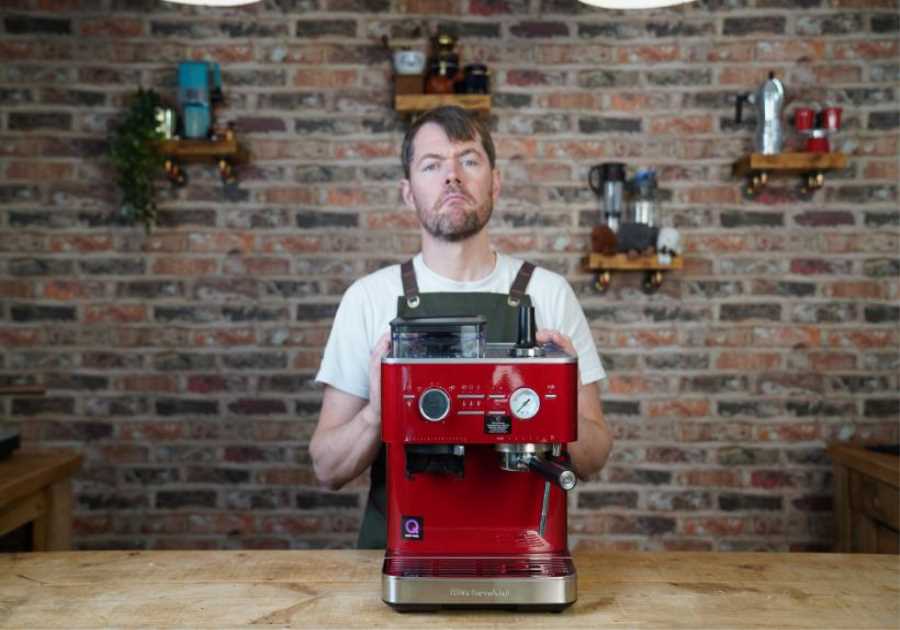Have you been wondering why your espresso shots just don’t taste right? Are they extracting too quickly, spraying, or flowing out one side?
If you’ve experienced anything like this when pulling a shot, the most common cause for many of these issues is something known as “channeling”.
To learn more about what channeling is, how it affects extraction, and how to avoid it, I spoke to Jill Hoff: the Director of Coffee and Education at Monogram Coffee, the 2020 Canadian Barista Champion, and a 2021 World Barista Championship semifinalist. Keep reading to learn more about her insights.
You may also like our article about how baristas from producing countries took centre stage at WBC 2021.
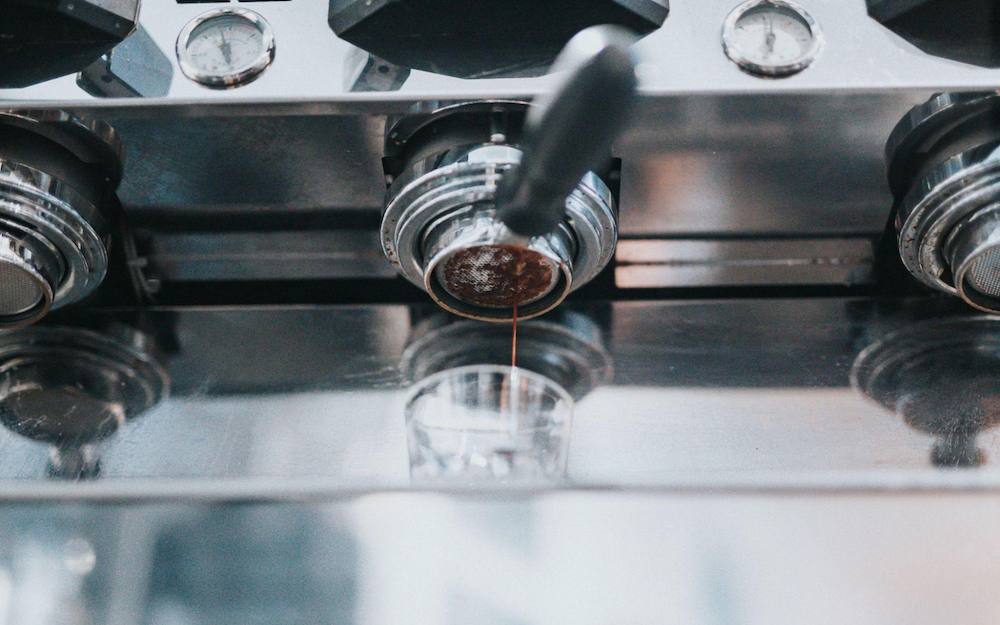
What is channeling? And what causes it?
In an ideal world, you want water to flow evenly, at a consistent rate, through the entirety of your coffee puck when you’re pulling an espresso shot. Unfortunately, it doesn’t always happen this way.
“Channeling occurs when there are weak spots in your coffee bed,” Jill says. “In these spots, water can pass through quickly, inhibiting an even flow through the puck.”
This causes a combination of under and overextraction, and creates an espresso shot which is both weak and sour as well as overly bitter at the same time.
Channeling is caused by many factors, however. Let’s look at some of the most common.
Grinding too fine
While we know how important a fine grind is for espresso, but going too fine can cause channeling.
The perfect grind size will depend on a number of factors, including your machine and the coffee you’re using. However, if you go too fine, you’ll find the puck is incredibly dense and almost impermeable after you tamp it.
This makes it harder for water to flow through it. The water will then find the “path of least resistance” (or paths) through the puck, which forms “channels”.
Poor grind distribution
When filling the portafilter basket with grounds, it’s not uncommon for it to fill up unevenly. If this isn’t fixed before tamping, you’ll get a puck that has uneven grind density.
This means that some areas will be denser, and some will be less so throughout the puck, creating paths of greater and lesser resistance.
Jill tells me that uneven distribution can add “boulders or clumps of grinds in your dose, causing higher density in those areas of the bed”.
When you pull your shot, the less dense areas will become the path of least resistance. This is where channels form. Within these channels, overextraction occurs; at the same time, they cause the denser parts of the puck to be undersaturated with water, which means that they underextract.
This is why many baristas use a tool to distribute coffee evenly once they grind and dose into the portafilter.
Jill tells me that one of the best tools she has used is Duomo the Eight.
“Using distribution tools, such as those offered by Duomo, is a really great way to precisely distribute consistently and avoid causing channels.”
Uneven tamping and dosing
As previously mentioned, distributing your grounds is an important part of preparing the puck for extraction. Tamping an unevenly distributed puck will only worsen the effect of channeling.
Jill explains why uneven tamping causes channeling. She says that as you use the tamper to compress the grounds, this increases the puck’s density, and thus the amount of pressure needed to move water through it.
The goal is to tamp the grounds at an even angle with consistent pressure.
“If there is a slope in the tamp, all the water will run through the lower side of the puck first,” Jill explains. “This will overextract that side of the puck (causing, once again, uneven extraction).”
Dosing issues can also cause channeling to occur. As different portafilter baskets can hold varying amounts of coffee, you’ll need to dose accurately depending on your basket size.
If you underfill the basket and the puck sits too low, the water will flow around the top, rather than evenly through it. Similarly, if it’s overfilled, and the puck sits too high in the basket, there won’t be enough room. This means the water might crack the puck and create channels.
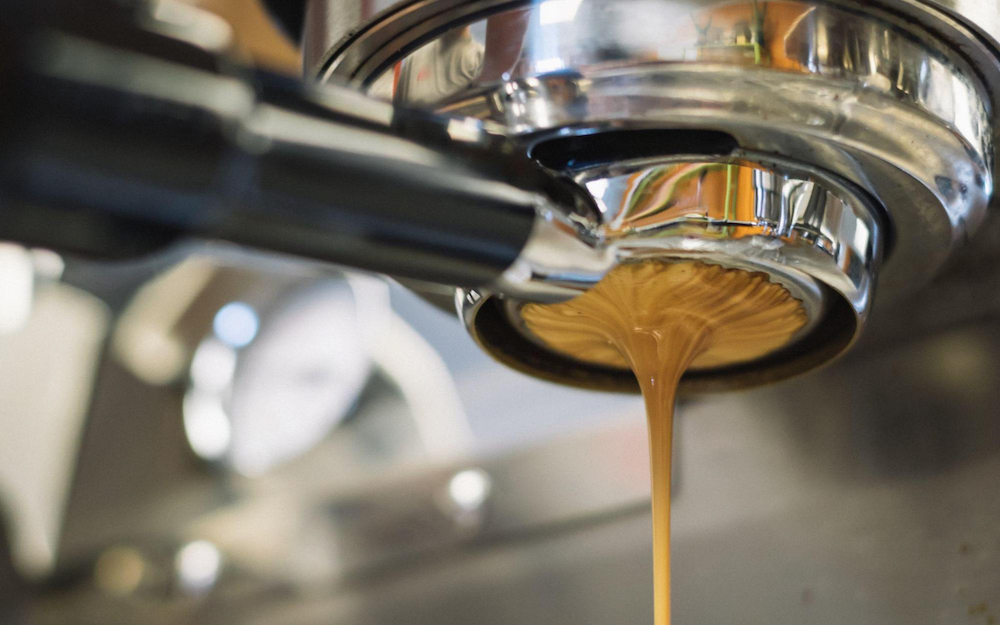
How does channeling affect extraction?
Extraction is the process of removing flavour compounds from dry, roasted coffee and dissolving them into water to create a beverage. There are a number of ways to measure how well coffee extracts, including total dissolved solids (TDS) and extraction yield (EY).
The ideal EY percentage range – according to the Coffee Brewing Institute and Specialty Coffee Association – is 18% to 22%. At this range, your espresso should be sweet, balanced, and rich.
However, when channeling occurs, you get a simultaneous mix of over and underextraction.
A percentage below 18% indicates the espresso is underextracted, meaning not enough of the coffee’s flavour compounds have been extracted from the grounds. Underextracted espresso tends to be sour, acidic, and almost hollow.
Meanwhile, EY percentages above 22% indicate overextraction. This can mean a bitter, salty, and burnt-tasting shot.
Jill says: “Channeling affects extraction because as the water flows unevenly through the coffee bed, it underextracts the higher-density areas, while overextracting the lower-density spots.
“This causes uneven extraction in the cup, which often means bitter, sour, and muddy flavours.”
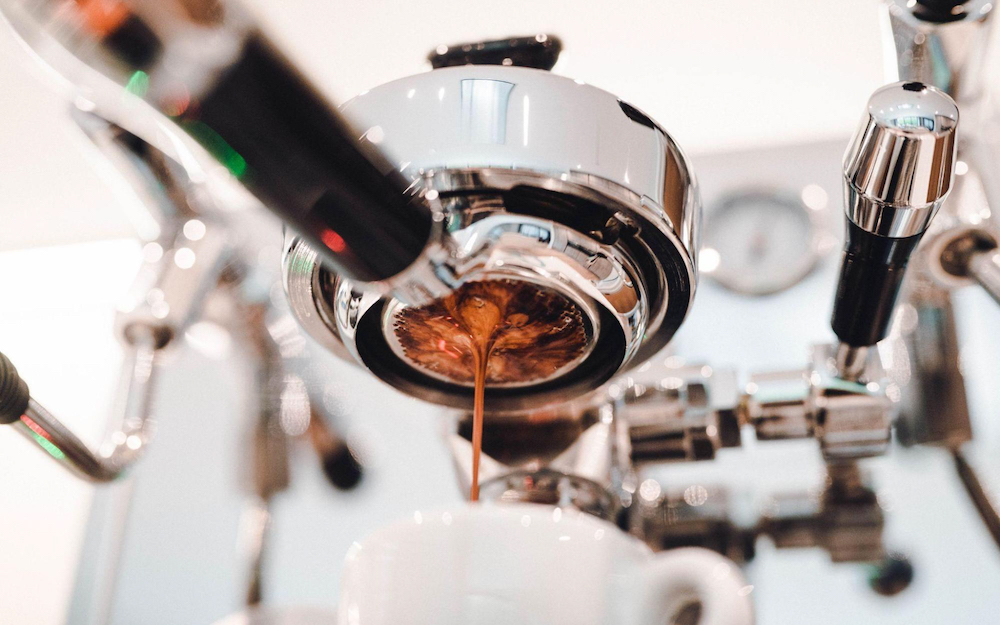
How to spot channeling
Channeling can be difficult to avoid if you don’t know the common warning signs and causes. The best way to spot it is to use a bottomless or “naked” portafilter.
As the coffee is being extracted, you can watch the underside of the basket to see how the espresso is flowing through the filter.
Once you see a steady flow, look for any gaps. You shouldn’t be able to see much of the metal filter through the golden espresso flow.
If you’re seeing places where there isn’t much or any espresso coming through, this is a sign of channeling.
Multiple streams, instead of just one, is also a sign of channeling. Similarly, streams of espresso spraying out at unusual angles is another indicator.
The position of the espresso stream is also an indication of channeling, even if it is slightly more subtle. The stream should flow directly downward from the very centre of the basket.
Another sign is when blonding happens quickly, or is present throughout the entire extraction process.
Espresso blonding is where the colour of the shot changes from dark to pale brown, signaling the end of extraction. Blonding at the beginning and throughout the duration of the espresso shot is a sign that the coffee is being underextracted.

How can you prevent channeling?
Fortunately, once you’re able to spot channeling occurring, there are plenty of things you can do to stop it.
Fine-tune the grind
Before you do anything else, take a look at your grind size. It’s important to make sure you’re not going too fine or too coarse for optimal extraction.
This also means you want a consistent grind at this size, so make sure you’re using a high-quality grinder.
Make incremental adjustments to grind size with each shot you pull to try and figure out where the problem might lie.
Distribute grounds evenly throughout the portafilter
The distribution of coffee grounds is another cause of channeling, but it is also solvable.
“Your goal with distribution is to ensure that you have settled the grinds evenly throughout the portafilter before tamping,” Jill explains. “This is important because if the coffee grounds are unevenly distributed in the portafilter prior to tamping, you will have areas of high and low density throughout.”
However, your grinder doesn’t usually distribute the grinds evenly by default. As such, you need to use the right equipment to improve distribution once you’ve dosed into the portafilter basket.
Jill says that she first used Duomo the Eight when competing in the Canadian Barista Championships to streamline the technical part of her set.
“Initially, I was pretty confident in my ability to distribute properly by hand,” she says. “However, once I tasted back-to-back comparison shots using the Duomo versus my usual distribution, I was sold.”
By using the Weiss Distribution Technique (WDT), the Eight eliminates clumps and improves distribution. It uses eight 0.7mm needles to properly distribute coffee throughout the basket.
“I discovered that it not only improved the flow and consistency of my shots, but also the flavour of my espresso as well.”
Jill notes that she then went on to use the Eight during her routine at WBC 2021 in Milan.
However, Jill notes that overdistribution is also bad, and can cause channeling in its own right – confirming that there is a sweet spot.
“Overdistribution will actually cause the grinds to start to clump together as they are agitated, which will actually do the opposite of what your goal is with distribution.”
Tamp your coffee bed properly
Jill reminds baristas that tamping the coffee puck level is another way to prevent channeling.
“The placement of your tamp will either reinforce the work done during distribution, or completely undo it if your tamp is uneven.
“An evenly placed tamp will ensure even saturation of the properly distributed coffee bed, which is obviously the goal when making espresso.”
She adds that it’s important to apply even and consistent tamp pressure.
However, using the right distribution tool (such as Duomo the Eight) also helps to improve the evenness of the coffee bed before tamping.
“In my experience, distribution tools often move the coffee only on the surface of the coffee bed,” she explains. “This creates a nice even top layer, but not throughout.
“The Eight helps make sure that coffee is distributed throughout the coffee bed.”
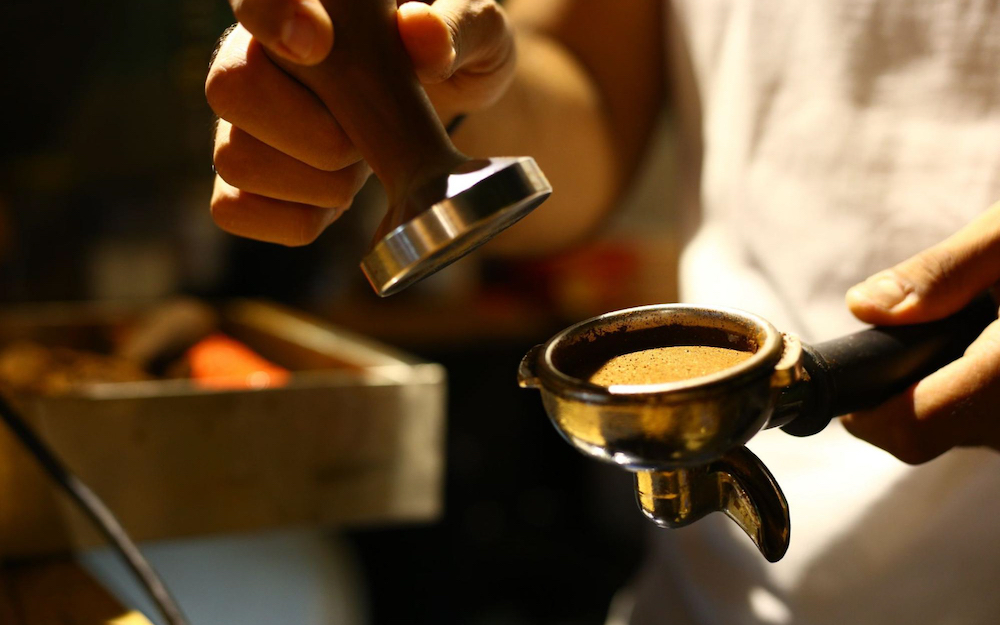
Using a high-quality tamper
As well as using the right distribution tool, Jill also notes that it’s important to use a high-quality tamper as well.
She describes tamping as “sealing the deal” right before extraction, and says it’s a key part of pulling consistently great espresso shots.
Choosing the right diameter, weight, and material for your tamper is important.
Firstly, pick the right tamper size for the diameter of your portafilter basket. You want a tight fit without much of the edges exposed, but you should also be able to spin the tamper inside the portafilter to smooth out the coffee bed.
You can also switch between hand and electric tampers. Hand tampers are by far more common, but automating the process can actually help to avoid repetitive strain injuries (RSI) in the long run.
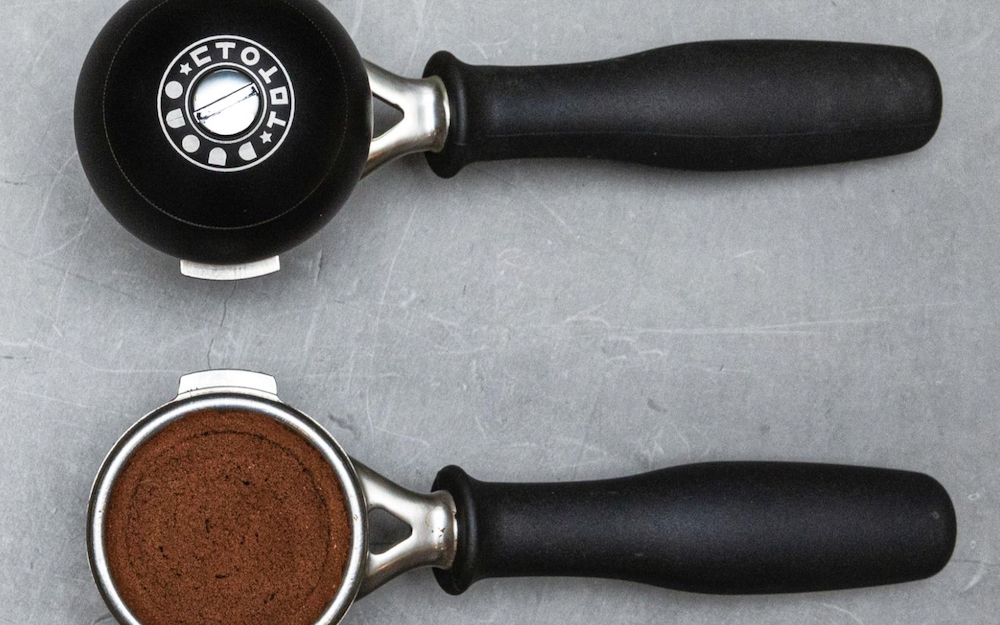
While channeling is a problem that every barista will encounter at some point in their career, there are plenty of ways to spot and address it.
So, for that next shot, get your naked portafilter ready and take a look at how your espresso is flowing. If it’s not right, fine-tune your grind, evenly distribute the grounds in the basket, tamp properly, and follow all the other tips in this article. By doing so, you’ll improve your chances of pulling a consistent, delicious espresso shot, time after time.
Enjoyed this? Then try our article on choosing a coach for barista championships.
Perfect Daily Grind
Photo credits: Duomo
Please note: Duomo is a sponsor of Perfect Daily Grind.
Want to read more articles like this? Sign up for our newsletter!
The post What is channeling and how does it affect espresso extraction? appeared first on Perfect Daily Grind.
By: Zoe StanleyTitle: What is channeling and how does it affect espresso extraction?
Sourced From: perfectdailygrind.com/2022/03/what-is-channeling-espresso-extraction/
Published Date: Tue, 29 Mar 2022 05:32:00 +0000






